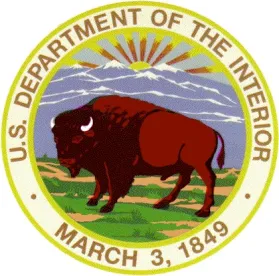On April 14, 2016, the U.S. Department of the Interior and the Bureau of Safety and Environmental Enforcement (BSEE) announced the release of BSEE’s final Blowout Preventer Systems and Well Control rule (Final Rule). The Final Rule, a comprehensive regulation that mandates more stringent design requirements and operational procedures for critical well control equipment used in oil and gas operations on the U.S. outer Continental Shelf (OCS), has been hotly contested since BSEE released a proposed version of the rule in April 2015. While BSEE has tempered some of the most controversial provisions of the proposed rule, implementation of elements of the Final Rule still could significantly impact domestic offshore oil and gas operations by creating additional expenses and burdens for those engaged in exploration, development, and production activities. This could prove particularly problematic for smaller operators.
This alert provides an overview of the Final Rule and brief analysis of some of the most significant changes that BSEE made to its proposal in finalizing the rule. The Final Rule will become effective 90 days from publication in the Federal Register.
Background
In the wake of the April 2010 Deepwater Horizon oil spill, BSEE launched an aggressive reform agenda to improve the reliability of blowout preventer (BOP) and other well control systems, with the ultimate goal of protecting both offshore oil and gas workers and the environment from offshore oil well blowouts and spills. On April 17, 2015—nearly five years after the Deepwater Horizon event—BSEE published in the Federal Register a proposed well control rule.
Overview of the Final Rule
According to Interior Secretary Sally Jewell, BSEE’s Final Rule is a “vital part” of the Interior Department’s “extensive reform agenda to strengthen, update and modernize [the] offshore energy program using lessons learned from Deepwater Horizon.” The Final Rule consolidates existing provisions of BSEE’s regulations at 30 C.F.R. Part 250 related to blowout preventers and well-control systems into a new subpart G, and adopts new and revised regulatory requirements to address many of the perceived gaps and deficiencies in the OCS regulatory program. Among other things, the Final Rule includes revised and new requirements for blowout preventer systems and double shear rams; third party reviews of equipment; real-time monitoring of data; safe drilling margins; centralizers; inspection intervals; and other reforms related to well design and control, casing, cementing, and subsea containment.
Significant Changes in the Final Rule
With the Final Rule, BSEE has made a number of revisions to reflect its consideration of public comments, including comments by industry that certain aspects of the proposed regulations were overly prescriptive and/or could actually increase environmental and safety risks. Below is a brief analysis of the most significant changes between the proposed well control rule and the Final Rule.
Safe Drilling Margins
BSEE initially proposed that “static downhole mud weight be a minimum of 0.5 pound per gallon (ppg) below the lesser of the casing shoe pressure integrity test or the lowest estimated fracture gradient” to help reduce the likelihood of a major well-control event and to ensure the overall integrity of the well design. Some commenters expressed concerns that strict enforcement of this 0.5 ppg “safe drilling margin” in all circumstances could cause adverse economic consequences to industry because the requirement could make it impossible for companies to reach target vertical depths.
The Final Rule maintains the proposed 0.5 ppg safe drilling margin as a default requirement, but allows deviation from the default drilling margin where the operator is able to justify doing so though supplemental data and other documentation. While the allowance for variances should be helpful to operators, the process by which BSEE will grant such variances is not well articulated. Section 250.414(c)(2) merely states that an operator “may use an equivalent downhole mud weight as specified in [its] Application for Permit to Drill (APD), provided that [the operator] submit adequate documentation (such as risk modeling data, off-set well data, analog data, or seismic data) to justify the alternative equivalent downhole mud weight.” The Final Rule does not, however, explain how BSEE will analyze this data to determine whether or not an alternative margin is justified.
Accumulator Systems
In the proposed rule, BSEE proposed increasing the capacity of accumulators to operate all BOP functions. BSEE also proposed that subsea BOP accumulator systems meet the existing requirements for accumulators servicing surface BOPs, “including the requirement that an accumulator system provide 1.5 times the volume of fluid capacity to hold closed all BOP components.” BSEE also proposed to require all surface accumulator systems to operate under maximum anticipated surface pressure conditions, with the blind shear ram being last in the BOP sequence, and still have sufficient accumulated pressure to allow the BOP to shear pipe and seal a well. Finally, BSEE proposed defining critical functions for BOP operation.
In response to industry concerns, BSEE amended its accumulator system requirements in the Final Rule to delete the “1.5 times volume capacity” requirement for all surface accumulators and to instead require that all accumulator systems (including those servicing subsea BOPs) meet industry sizing specifications outlined in API Standard 53. BSEE now will require that subsea accumulators have accumulator bottles that are dedicated to autoshear and deadman functions, but will allow sharing of accumulator bottles for those two functions. The Final Rule also extends the effective date for compliance with the new accumulator requirements to five years.
BOP Inspections
The proposed rule included a requirement that operators completely break down and inspect a BOP and every associated component every five years. The proposed rule did not allow for this breakdown and inspection to occur in phased intervals. While most industry commenters did not object to a five-year inspection requirement for each BOP component, they suggested that the inspections be staggered, or phased over time. These suggestions were driven by concerns that requiring all components to be inspected simultaneously “would put too many rigs out of service, potentially for long periods of time, with substantial economic impacts.”
Based on industry comments, the Final Rule allows a phased approach for five-year inspections, provided that the operator documents and tracks the work to ensure that BSEE is able to verify that each applicable BOP component has had a major inspection within five years.
Real-Time Monitoring
The proposed rule detailed various real-time monitoring (RTM) system requirements. Among other requirements, BSEE proposed to mandate that RTM systems gather and “immediately transmit” a range of data related to BOP and well control systems to an onshore facility that would monitor and maintain “continuous contact” with the rig during drilling operations.
In comments, industry suggested the RTM requirements were overly prescriptive and could be eliminated if BSEE simply required operators to develop specific RTM plans. The Final Rule imposes more flexible, performance-based measures. According to the Final Rule, these revisions “better reflect BSEE’s intention that operators use RTM as a tool to improve their own ability to prevent well control incidents while providing BSEE with significant access to RTM information to evaluate system improvements.”
Increased Severing Capacity
In the proposed rule, BSEE contemplated including a requirement for operators to “install technology that is capable of severing any components of the drill string (excluding drill bits) . . . within ten years from publication of the final rule.” Industry commenters generally opposed this provision, noting that such a requirement would be expensive and extremely difficult to meet, even within a ten-year compliance period.
While BSEE says that it continues to believe that there may be value in such a severing requirement, the agency decided not to include the requirement in the Final Rule. Instead, it stated that it will continue to review severing technology on a periodic basis, with the intent to conclude its review within seven years of the effective date of the Final Rule.
BOP Pressure Testing Intervals
BSEE initially had requested comments on what should be a required frequency for BOP pressure testing, asking whether the BOP pressure testing interval should be seven days, 14 days (as proposed), or 21 days. Most industry commenters supported increasing the pressure testing interval for workover and decommissioning BOPs from seven days, and recommended increasing the testing interval for all BOPs to 21 days, noting, among other benefits, that longer intervals would reduce wear and tear on equipment.
Based upon industry comments, the Final Rule increases the test interval for workover and decommissioning BOPs to 14 days. BSEE, however, was not swayed by industry’s position that a 21-day interval would lead to greater system reliability.
Implications of the Final Rule
The Final Rule will create significant additional expense and burdens for those engaged in exploration, development, and production activities on the OCS. Ultimately, these added economic and compliance costs, together with other regulatory burdens, could force some smaller operators out of business and drive larger operators away from the federal OCS toward countries with less prescriptive regulatory environments or other opportunities.
One of the difficulties in assessing the potential impacts of the Final Rule is that BSEE and industry have taken very different views as to the costs of rule implementation. In the proposed rule, BSEE undertook a Regulatory Impact Analysis (“RIA”), which found that the initial cost of rule implementation would total near $165 million in the first year of implementation, and between $77 million and $99 million in the nine years thereafter. While BSEE projected that the proposed rule would have a “significant impact on a substantial number of small entities” and would impose a federal mandate “that may result in the expenditure by the private sector of $100 million or more[,]” the agency said it believed that implementation of the rule would cost less than $1 billion.
Industry has strongly criticized BSEE’s estimates. One integrated major, for example, has argued that implementation of the Final Rule could total $25 billion over 10 years and render development and production of many offshore discoveries uneconomic. Other critics assert that BSEE has failed to adequately account for the indirect impacts of the rule, such as job losses resulting from a contraction of the U.S. offshore oil and gas industry. BSEE rejects these claims, arguing that these potential impacts are too speculative and therefore fall outside the scope of the analysis required by the Office of Management and Budget.
While BSEE’s assertion is technically true—some of the asserted indirect costs of the rule do fall outside the scope of the requirements for an RIA as mandated by Executive Order 12866—industry’s concerns are more grounded in reality. When the Final Rule is viewed in concert with other recent actions by the Department of the Interior—such as the Bureau of Ocean Energy Management’s (“BOEM”) publication of proposed revised air quality regulations and BOEM’s efforts to amend its financial assurance regulations and policies—the costs of operating on the OCS are (or soon will be) dramatically higher than they were a decade ago. Combined with the extended period of low oil and gas prices, many smaller companies are struggling to remain solvent—as illustrated by multiple bankruptcies in the industry—while larger companies are rethinking their exploration and production strategies, choosing to move onshore to projects with shorter life-cycles and less intensive capital costs.





 />i
/>i

